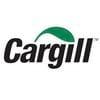Top breeder performance with improved mycoplasma control
Published: May 11, 2022
Source : Chris Morrow / Bioproperties Pty Ltd, Australia.
A medium sized broiler day old chick supplier into the Indonesian market, P.T. Peternakan Ayam Manggis, use Cobb 500 grandparent stock and have a production base of about 800,000 parent stock. They also have Hisex layer breeders and sell day old layers. Over the last decade, since switching to Cobb for broilers, they have been improving performance with investments in feed milling and other sectors of production but performance was still below expected and the appearance of clinical respiratory disease in lay seemed to be an intractable problem. The use of U$85,000 of tylosin per year and vaccination with F strain MG live vaccine appeared to make no difference.
The technical staff at Romindo suggested they try live ts-11 M. gallisepticum vaccine and live MSH M. synoviae vaccine. The advice included the complete removal of routine antibiotics. Having the same strategy for MG and MS control has the advantage that there is no cross interference. For example, the continued use of routine antibiotics after live mycoplasma vaccination probably leaves the control of the mycoplasma solely to the antibiotics –all live mycoplasma vaccines have no acquired resistance. This can be problematic if the local mycoplasma strains are resistant to antibiotics and certainly not sustainable.
The live vaccines MSH and ts-11 are given at 31 days of age by eyedrop: one vaccine in each eye. The results were dramatic across the whole parent stock production and are presented in Table 1.
The feed per egg in some flocks was as low as 280g per saleable chick and this saving in feed more than pays for the vaccine in real time despite any volatility of the day old chick price.
The veterinary staff did not have access to a lot of diagnostics but do try to monitor vaccine responses where possible. Now, no clinical signs are seen, but they do see increasing mycoplasma antibody from 10 weeks. No antibiotics are used after the first week (and they are avoided after vaccination). The vaccination programme also includes VG/GA NDV vaccine (Avinew) and APMV vaccine (Nemovac) allowing better control of these respiratory pathogens.
In another ts-11 and MSH mycoplasma vaccinated flock in Indonesia we observed pale eggs and an egg production drop that coincided with seroconversion to avian metapneumovirus (AMPV) at the peak of lay. On clinical examination of this farm there were almost no clinical signs of swollen head syndrome or respiratory disease in the birds. It seemed that the control of mycoplasma with the vaccines decreased respiratory signs in the field usually seen with AMPV infection. These hens rapidly bounced back into production with no chronic effects.
Production at P.T. Peternakan Ayam Manggis has now been running well for over 24 months and peritonitis in lay is also reduced. Maternal antibody to MS and MG can be seen in the day old broilers but customers are not concerned. The improvement in chick quality has reassured them. And there are future potential benefits to the day old chick customers – being free from vertical contamination means the broiler chicks do not need to have routine anti-mycoplasmal antibiotics. This is attractive for people who are trying to make sure that no antibiotic residues get into their product, or having to worry about antibiotic resistance and it is cheaper.
Although no exact diagnosis of the original cause of the respiratory disease was made, the response to vaccination was the solution to the problem. MS control is the final piece in weaning poultry production systems off antibiotics. Now they know how to do it we can expect big growth in the market with Manggis’s ability to supply quality breeders and layers.

This article was originally published in International Hatchery Practice — Volume 29 Number 3.
Related topics:
Mentioned in this news release:
Bioproperties PTY Ltd
Influencers who recommended :
Hafez MohamedRecommend
Comment
Share
Bioproperties PTY Ltd
31 de agosto de 2022
I must declare a vested interest here. I work for a company that commercialized ts-11 and MSH and I invented the MSH vaccine in 1988.
So here i go (I dont know if you are talking about breeders or layers)
F strain has never been used in the USA for vaccinating breeders (worry that it has been found outside the flock it was put in - same for 6/85) but it has been used in many places around the world in breeders and often without problems especially if they are also using antibiotics in breeders and progeny. (so once they start using antibiotics then they are using an antibiotic program and not vaccine for mycoplasma control).
So in Mycoplasma positive progeny and sometimes in breeders people give antibiotics also for “Post vaccinal reactions”. That is if they don’t give antibiotics they massive respiratory reaction. Commonly prophylactic antibiotics are given at Day 18 in broilers to LaSota vaccination at day 10. Of course antibiotics do nothing for the viral component. With F strain you can prevent the vaccine reaction with nearly any antimycoplasmal antibiotics that is absorbed orally and it works as F strain like ts-11 is sensitive to all antibiotics. Vertically transmitted Mycoplasma Field strain augmented LaSota vaccine reactions need an antibiotic that the field strain is sensitive to.
You can also use ts-11 to push out F strain once the F strain has pushed out the field strains has been suggest (Kleven and Turner 1984) but I have never seen anyone do it and I believe we have shown ts-11 handling field strains by itself many times around the world.
The myth that ts-11 is not strong enough to do the pushing out of the MG strain I think is flawed. It is based on
1) The poor serological response to ts-11 vaccination to peak of lay. I have been thinking about this and I think this serological response is because the parent strain of ts-11 was isolated from a broiler breeder breeding programme in Australia in the 1980s that had been trying to eradicated MG with limited success chasing it with serology for atleast a decade. I think they made the parent hide till it could be vertically transmitted.
2) Pen experiments where Stan Kleven tried to see if birds vaccinated and they challenged could resist challenge. He did most of this work very well and with a lot of thought but his labs media was not liked by ts-11 and biased his results. If you look at the titres of ts-11 used in one paper they are all over the place but reassured the vaccine batches were above 10^8 CCUs/ml as tested by the USDA for release (Merial used to supply the media for testing). These titres actually show the batch to batch toxic effect of the UGA media on ts-11. Sometimes dropping ts-11 growth by 6 logs,
3) What level of protection do you actually need. I think it is to stop farm to farm transmission not bird to bird. Ts-11 is strong enough for that.
F strain has struggled to show that it is safe without antibiotics. Some people have argued that if it is given by eyedrop you don’t get vertical transmission. The vertical transmission is consistent in the literataure. Ts-11 vertical transmission happened in Georgia USA but was not our usual experience – our usual experience is Barbour 2000.
So USA experts tell people around the world to use F strain in breeders – maybe to nobble them so USA performance looks better. South America, Parts of Asia, Egypt etc. There is usually one integration in each of these countries having F strain problems in breeders and/or progeny - I think it is probaly the integrations not using antibiotics after F strain vaccination.
Recommend
Reply
Trouw Nutrition
31 de agosto de 2022
Hello Dr. Morrow, thakns for the massive response. I apologize because I am not an english native speaker, but I'll try to do my best.
Actually, in the company where I work, we use F Strain for heavy breeders and layers. The purpose of using it in the breeders, is to effectively control field MG; and in the layers, is to protect the breeders for croosed infections, not because it's relevant for them.
We have had very good results, because our chickens stopped to had a respiratory syndrome with E. coli.
But, after 40 or 45 weeks of age in the breeders, making survelillance of Mg throught tittres, we appreciate a tendence fot the tittres to go up, and we prefer not to take risks, ans we use an antibiotic just ton control the titters, because usually don't fall to 0.
I hope my answers are well redacted and undestable.
Any questions please let me know.
Recommend
Reply
Trouw Nutrition
31 de agosto de 2022
Hello Dr. Morrow, thanks for sharing the article.
If I read well, it more recommended nowadays the TS-11 vaccine over the F-strain vaccines?
Recommend
Reply

Would you like to discuss another topic? Create a new post to engage with experts in the community.















